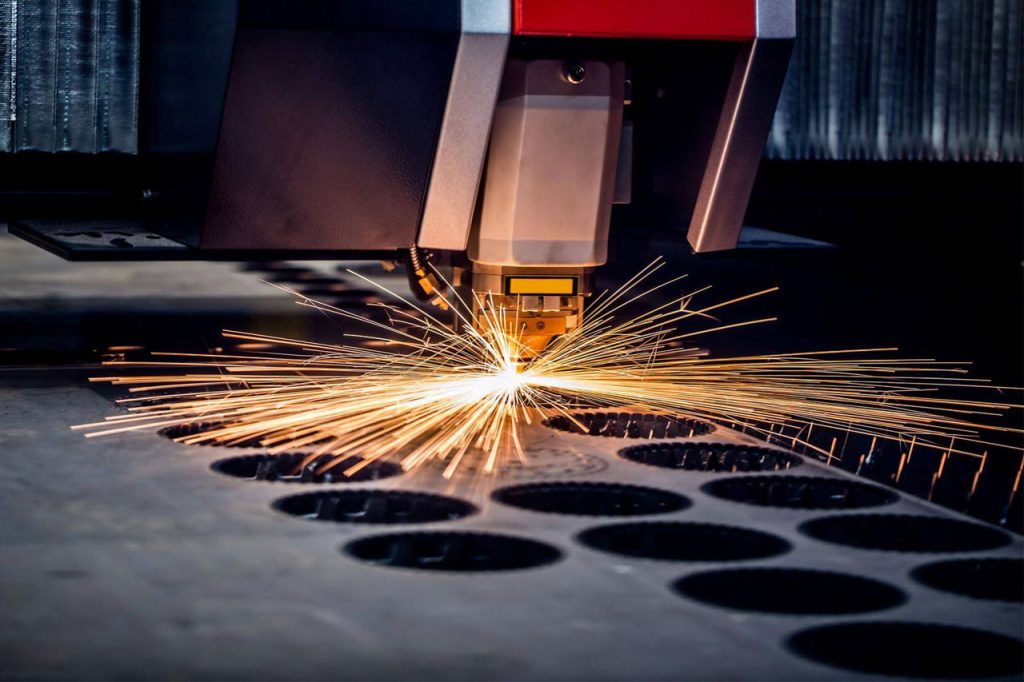While sheet metal cutting is straightforward in theory, it often comes with a set of challenges that can affect both the quality and efficiency of production.
In this article, we will explore common sheet metal cutting problems and their practical solutions to improve performance and output.
1. Inaccurate Cuts
Incorrect sheet metal cuts can lead to parts that don’t fit correctly, leading to costly rework, material waste, and delays in production. This problem can be caused by incorrect machine setup, misalignment of the sheet metal, or poor quality of tools used in the cutting process.
To solve accuracy issues:
- Ensure Proper Machine Calibration: Always calibrate machines before use. CNC laser cutters, plasma cutters, and waterjet cutting machines should be regularly checked and adjusted for precision.
- Quality of Cutting Tools: Use sharp, well-maintained cutting tools. Dull blades or worn-out laser optics can compromise cut quality.
- Proper Sheet Metal Alignment: Check the alignment of the metal sheet to ensure it is securely held in place during cutting. Automatic alignment systems or fixtures can be employed for improved accuracy.
2. Burr Formation
Burrs are small, raised edges of metal that form after cutting. Burrs can affect the quality of the final product, cause safety hazards during handling, and make post-processing steps like welding or painting difficult.
To minimize or eliminate burr formation:
- Choose the Right Cutting Method: Laser cutting and waterjet cutting tend to produce less burr compared to methods like punching or plasma cutting. If burrs are inevitable, consider secondary operations such as deburring or tumbling.
- Adjust Cutting Parameters: If burrs are appearing in punched or sheared metal, adjust the cutting speed, pressure, and tool alignment to minimize deformation.
- Post-Processing Techniques: After cutting, use deburring tools, vibratory finishing, or hand finishing to smooth out any unwanted burrs. In some cases, a small deburring station can streamline the process.
3. Warping of the Material
Warpage is the deformation or bending of the sheet metal after cutting, typically caused by excessive heat generation during the cutting process or improper support during cutting.
To prevent warping:
- Control Heat Input: For processes like laser and plasma cutting, ensure that heat input is controlled. A slower cutting speed can reduce thermal stresses.
- Support Material Properly: Use a proper clamping system or support table that holds the material flat throughout the cutting process.
- Use Controlled Cutting Techniques: Waterjet cutting is a cold-cutting process, which minimizes heat buildup and, consequently, reduces the risk of warping. Consider using these methods for materials prone to warping.
4. Material Distortion
Material distortion can occur if the cutting process induces stresses into the material, causing it to bend or change shape. This can often be seen in thinner materials or when using incorrect cutting speeds or pressures.
To avoid material distortion:
- Choose the Correct Material Thickness: Thicker materials are generally more resistant to distortion, so using the right thickness for the job is crucial.
- Use Laser or Waterjet Cutting: These methods minimize mechanical forces on the material, reducing the chances of distortion. They are especially suitable for delicate materials.
- Optimize Cutting Parameters: Adjusting cutting speed, pressure, and focus can help reduce the thermal impact and mechanical forces that lead to distortion.
5. Poor Edge Quality
Rough or inconsistent edges can result in poor aesthetic appearance, affecting the final product’s look and performance. In many cases, it can also lead to poor weldability or paint adhesion.
To improve edge quality:
- Invest in High-Quality Tools: Ensuring sharp cutting tools or the proper maintenance of CNC machines can lead to smoother, cleaner edges.
- Use Secondary Finishing Processes: After cutting, edge grinding, or polishing can help smooth out the rough edges.
- Review Cutting Speed and Pressure: Too fast or too slow cutting speeds can lead to rough edges. Fine-tuning these parameters for the material in use can improve the final edge quality.
6. Excessive Heat-Affected Zones (HAZ)
The heat-affected zone (HAZ) is the area surrounding a cut that has undergone changes in its microstructure due to excessive heat exposure. This can affect material properties such as hardness and strength, especially in metals like stainless steel and titanium.
To minimize the heat-affected zone:
- Control Cutting Speed and Power: Adjust the power output and speed of the cutting process to reduce the heat generated.
- Use Cooling Techniques: Waterjet cutting, for instance, uses water as a cooling agent, preventing a heat-affected zone altogether.
- Consider Post-Cutting Heat Treatments: In cases where heat exposure is unavoidable, consider post-cutting treatments like annealing to relieve stresses and restore material properties.
7. Material Scrapping
Sheet metal can be unnecessarily scrapped due to poor cutting setup, incorrect tool choices, or poor quality control. Scrapping adds to material costs and reduces overall profitability.
To reduce material wastage:
- Optimize Cutting Layout: Use nesting software to arrange parts in a way that minimizes material wastage.
- Monitor Tool Wear: Worn-out tools tend to cut inefficiently, leading to excess waste and poor quality. Regular tool inspections can prevent this.
- Properly Estimate Material Requirements: Ensure you order the correct amount of material, factoring in cutting losses, to reduce unnecessary scrapping.
8. Noise and Vibration
Excessive noise and vibration during the cutting process can not only affect worker comfort and safety but also negatively impact machine precision, leading to lower quality cuts.
To reduce noise and vibration:
- Machine Maintenance: Ensure machines are properly maintained to avoid parts becoming loose, which can cause unnecessary vibrations and noise.
- Use Damping Systems: Some machines come equipped with vibration-damping systems to reduce these issues.
- Optimize Cutting Parameters: Adjust the cutting speed and feed rate to balance efficiency with reduced vibration.
Conclusion
By understanding the root causes of these issues and applying practical solutions, manufacturers can improve the efficiency and accuracy of their sheet metal cutting processes. Regular maintenance, correct tool selection, and process optimization are key to ensuring smooth, high-quality results while minimizing waste and rework.

